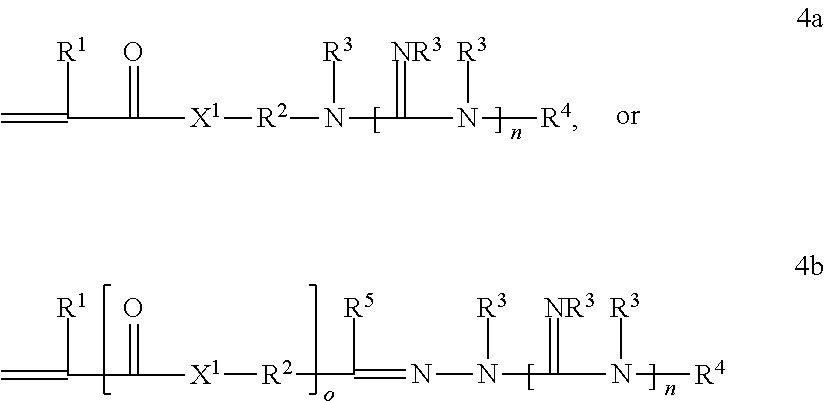Ligand functional substrates
a functional substrate and ligand technology, applied in the field of ligandfunctionalized substrates, can solve the problems of increasing the occurrence of problematic channeling, severe bottlenecking issues, and low throughput using this technology
- Summary
- Abstract
- Description
- Claims
- Application Information
AI Technical Summary
Benefits of technology
Problems solved by technology
Method used
Image
Examples
examples
Test Methods
Static BSA Capacity Test for Membranes
[0120]Disks measuring 24 mm in diameter were punched out of the membranes and placed in 5 mL centrifuge tubes. Bovine serum albumin solution (BSA; Catalog #A-7906; Sigma Aldrich; St. Louis Mo.) was prepared to a concentration of about 3.0 mg / ml in 25 mM TRIS (tris(hydroxymethyl)aminomethane; Sigma Aldrich; St. Louis Mo.) buffer, pH 8.0 and 4.5 ml of the BSA solution was pipetted into each centrifuge tube. The tubes were capped, and tumbled overnight (typically 14 hours). The supernatant solutions were analyzed using a UV-VIS spectrometer at 279 nm (with background correction applied at 325 nm). The static binding capacities for the samples were determined by comparison to the absorption of the starting BSA solution, and are reported in mg / mL as the average of three replicates.
Dynamic BSA Capacity Test for Membranes:
[0121]The membranes were analyzed for binding of proteins by passing solutions of the test analytes through a 6-layer st...
examples 6-9
[0126]Coating solutions were prepared at 5% total solids, according to the procedure described above for Example 3, except that a co-monomer, DMA (Dimethylacrylamide, Sigma Aldrich), replaced a portion of the DAAm as shown in Table 2. Primed membranes were likewise coated, UV grafted, reacted with aminoguanidine, and washed, and tested for Static BSA Capacity (Table 2).
TABLE 2Static BSA CapacityExampleDAAm (grams)DMA (grams)(mg / mL)64.750.259074.50.58584.250.757894.01.063
examples 10-11
[0127]Coating solutions were prepared at 5% solids according to the procedure described in Example 3. Example 10 was coated and grafted on a primed membrane, as in Example 3, while Example 11 was coated and grafted on an unprimed membrane (#080ZN from 3M Purification, Inc). The grafted membranes were reacted with aminoguanidine as in Example 3, except that the aminoguanidine sulfate solution was prepared at a 2.0 M concentration. Static BSA capacities were measured to be 97 and 88 mg / mL, respectively, for Examples 10 and 11.
PUM
| Property | Measurement | Unit |
|---|---|---|
| Fraction | aaaaa | aaaaa |
| Fraction | aaaaa | aaaaa |
| Molar density | aaaaa | aaaaa |
Abstract
Description
Claims
Application Information
 Login to View More
Login to View More - R&D
- Intellectual Property
- Life Sciences
- Materials
- Tech Scout
- Unparalleled Data Quality
- Higher Quality Content
- 60% Fewer Hallucinations
Browse by: Latest US Patents, China's latest patents, Technical Efficacy Thesaurus, Application Domain, Technology Topic, Popular Technical Reports.
© 2025 PatSnap. All rights reserved.Legal|Privacy policy|Modern Slavery Act Transparency Statement|Sitemap|About US| Contact US: help@patsnap.com



